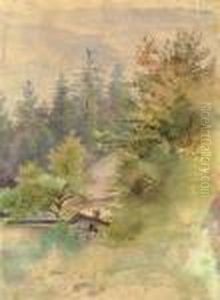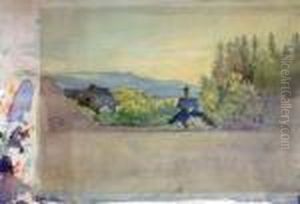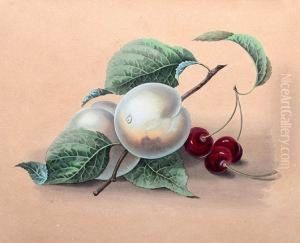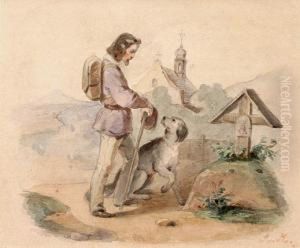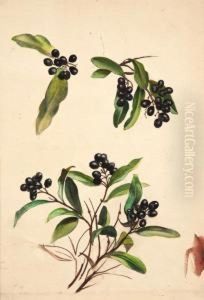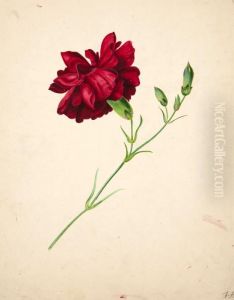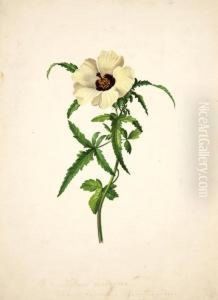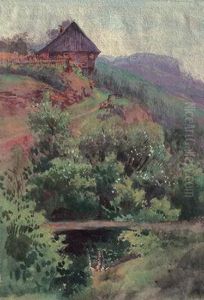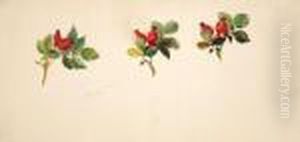Amalie Manesova Paintings
Amalie Mánesová was a Czech painter and member of the prominent Mánes family of artists that played a significant role in the Czech art scene of the 19th century. Born on February 21, 1817, in Prague, she was the daughter of the painter Antonín Mánes and sister to Josef Mánes, one of the most renowned Czech painters of his time, and Quido Mánes, also an artist.
Despite the gender norms of her era that often restricted women's access to formal art education, Amalie developed her skills under the guidance of her father and through her interactions with her brothers. She was known for her watercolor landscapes and genre scenes, which were highly influenced by the Romanticism movement. Her work often captured the beauty of the Czech countryside and the simple lives of its inhabitants, reflecting a nationalistic spirit that was common among Czech artists of the period.
Amalie remained unmarried throughout her life, which was somewhat unusual for women of her social standing at the time. This allowed her a level of independence to focus on her art. Unfortunately, her career was overshadowed by the success of her brother Josef, and as a result, her contributions to Czech art have often been overlooked. She exhibited her work at the prestigious Krasoumná jednota (Society for the Promotion of the Arts) in Prague and participated in other exhibitions, but she did not gain the same recognition as her male contemporaries.
Amalie Mánesová passed away on February 4, 1883, in Prague. Her legacy is preserved in part through her works that are housed in various Czech galleries, including the National Gallery in Prague. Art historians have begun to reassess the contributions of female artists like Mánesová, recognizing their role in the development of national art traditions and their resilience in the face of societal constraints.
